8 winning holiday marketing strategies for 2025

The holiday shopping frenzy isn’t confined to crowded malls. It’s happening online, and social media is the storefront. The Q4 2025 Sprout Social Pulse Survey found that compared to the 2024 holiday season, 80% of social users plan to use social as much, if not more to find gifts.
Holiday purchasing decisions are starting even earlier than usual. According to Sprout Social Listening data, from August 11 to September 11, 2025, there were more than 73,000 posts on X discussing Black Friday, holiday shopping, holiday deals and the holiday season. Conversations around these topics were higher this August and September when compared to previous years. Brands are taking note of early holiday interest and even gripping onto new holiday marketing trends, like Summerween.
Your seasonal social media marketing has the power to make or break your holiday sales. To make an early impact this holiday season, you’ll need to have a clever and well-timed holiday marketing strategy to stand out.
In this article, we’ll explore how your brand can lean into holiday marketing to make the most of the elongated festive season—from preparing Black Friday campaigns to the beginning of the new year.
8 holiday marketing strategies for 2025
From the coziness of autumn to the magic of a winter wonderland, seasonal marketing campaigns call upon the strong emotional connection we feel toward end-of-year holiday traditions.
But new trends like Summerween have begun to flip the script on how brands market for the holidays. Customers now expect plenty of buildup to big holiday events like Christmas, and a lot of this hype is now generated across social platforms.
This social hype is important because customers are spending earlier than ever before. Even though most holiday shoppers said they were planning to spend the same dollar amount as in previous years, McKinsey found that 2025’s buyers have already started shopping for early deals.
Here are several strategies you can use online to capture these early buyers and boost your holiday sales.
1. Plan your holiday marketing campaigns early
When’s the best time to start planning your holiday marketing campaigns, if you haven’t yet? As soon as you finish reading this guide.
According to Sprout’s Q4 2025 Pulse Survey, 44% of social users say they are more likely to buy from brands that launch their fall and winter (e.g., holiday/Christmas) marketing campaigns as early as August. This goes up to 63% for Gen Z, 53% for Millennials and 60% for Black social media users. Customers are already planning their holiday purchases and looking for early deals, so you must start planning and posting your holiday marketing campaigns as soon as you can.
While early holiday shopping is particularly strong this year, it’s a trend that’s been building for a couple of years. This year, Lego started its Christmas countdown Instagram content as early as September 16th.
As you develop your 2025 campaign, be sure to plan content scheduling and map out key dates (holidays themselves, Black Friday, etc.). Having posts ready to go and scheduled in advance will ensure smooth sailing during the busiest holiday shopping times.
2. Create holiday-themed visuals and posts
Part of the reason those holiday decor discussions start earlier each year is that people love getting into the spirit of the season. From ugly holiday sweaters to themed food, many people adjust some part of their lives each year to fit the “theme.” Your brand’s social media content is no exception.
Craft static posts and videos that feature holiday motifs, color palettes and themes. It’s a good idea to ensure each one fits into your overall holiday aesthetic for the year so your audience gets a cohesive experience with each piece of content you post. Make sure these posts follow your brand guidelines, yet are distinct from the rest of your content this year.
Try and capture the magic of the holidays with your content. Cartier produced an upbeat wintery TV ad for the season in 2024, and made sure to repurpose the footage across YouTube, TikTok and Instagram.
3. Personalize your social media messaging
Personalized messaging is the gold standard for all marketing. But it’s extra important during a season full of nostalgia, family time and hope for the coming year. Any time you directly reach out to a customer, you have an opportunity to personalize and curate that experience.
Break down your audience in specific groups, and design a messaging approach for each. This includes email marketing, but make sure you’re not neglecting social media messages. The 2025 Sprout Social IndexTM found that the number one thing customers expect from brands on social media today is personalized customer service.
Social content works as a form of direct connection with your customers, and messages are an additional way of extending that connection. They’re arguably the most personal way to interact with users, as you can have a one-on-one discussion about their needs. The holidays can be a particularly stressful time for some people, so make sure to stay on top of your social inbox and respond as quickly as you can.
It’s also important to build in some holiday time for you and your team. Make use of chatbots and clear closure messages, so your followers aren’t disappointed if they don’t receive a reply on the days when you’re celebrating.
4. Take advantage of user-generated content (UGC)
One of the best ways to showcase your brand’s holiday offerings is through authentic user-generated content. Whether a video at your brand’s brick-and-mortar location or a holiday video featuring your brand’s products as part of a user’s family celebrations, user-generated content can often convey warmth and realness in a way ads can’t.
Encourage your audience to share their holiday experience with your brand by asking questions about holiday planning and celebrations, and how your products may tie into them. For example, if you’re a food company selling pasta sauce, ask your audience if they’re using your sauce in any holiday meals and tag you in photos or videos of their dishes.
You can also find user-generated content through social listening and request permission to reshare when you find positive content about your brand.
5. Collaborate with influencers
The holidays are a perfect time to launch a new campaign with influencers to make sure you cut through the noise and reach your audience. According to Sprout’s Q2 and Q3 Pulse Surveys, 64% of people are more willing to buy from brands that have partnered with one of their favorite influencers.
Many influencers do holiday gift list suggestions that your brand may be able to be a part of. You can also craft campaigns specifically around your brand, showcasing one or more of your products or services through an influencer’s content. Some other popular examples of influencer holiday campaigns can include product tutorials, live shopping events and festive account takeovers.
If you’re selling food or beverages, recipe content can be a great way to get your brand in front of users during the holidays. Here’s an example of a collaboration between Lahbco and Pepperidge Farm.
By adding influencers to your holiday marketing campaigns, you can widen your reach while also benefiting from the creative insights and trust creators have built within their communities.
6. Run festive contests and giveaways
With tight budgets this holiday shopping season, giving something to your followers for free might be just the thing your brand needs to boost awareness of your holiday offerings. In Sprout’s Q4 2025 Pulse Survey, 44% of social media users said they plan to reduce their holiday spending this season, meaning deals will be especially enticing this year. Promo codes that you or an influencer share on social media may carry the most weight in increasing consumers’ likelihood to buy from your brand.
Consider running a festive contest or giveaway on your social channels, spotlighting the products or services you’re prioritizing in your holiday marketing. You can have the audience enter via comments, shares, etc.—keep in mind that the fewer barriers to entry, the more participants you’ll have.
7. Share behind-the-scenes content
As your team rolls out your holiday marketing campaigns, don’t forget that your internal celebrations are of interest to your audience, too. Consumers value authenticity in a brand, and one way to show that is to let your audience get to know the people behind the products.
Share photos of your organization’s holiday parties, office decorating, gift swaps or potlucks to add more of a human element to your marketing. Another strategy is to share behind-the-scenes content about your marketing or creative process. Here’s an example from the UK supermarket Sainsbury’s, which shared a video on LinkedIn that explains how they filmed their Christmas TV advert.
Contests can be a great way to collect user-generated content, too. Consider having participants tag you in a photo featuring one of your products as a requirement for entry, and share the winner’s content on your feed.
8. Gear up for a high-demand customer care season
Consumers take their holiday purchases seriously. This means the holiday season can be the busiest time of the year for customer care teams, and consumers have high expectations.
The Index found that 73% of social users agree that if a brand doesn’t respond on social, they’ll buy from a competitor. The speed and quality of customer care they receive on social is a factor of their loyalty. Make sure your marketing approach accounts for this and includes a thought-out approach to customer care.
Remember that early seasonal shoppers will also expect message replies alongside early content. Sprout’s Q4 2025 Pulse Survey found that compared to the 2024 holiday season, 65% of users plan to use social as much, if not more to get customer service questions answered.
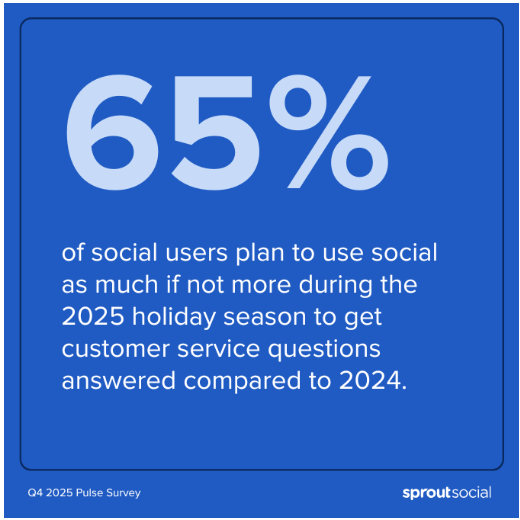
If you’re struggling to manage holiday messaging demands, invest in a supportive tool. Having a platform like Social Customer Care by Sprout Social, or using an integration like Sprout + Salesforce Service Cloud to manage your customer interactions can relieve the burden from your team. Our platform gathers insights automatically to help you understand customer care’s impact on revenue, and offers real-time alerts so you can avoid a crisis—especially critical during the holidays.
Finally, treat your customer care as a core part of your holiday marketing strategy. Take the time to create a response workflow for certain messages, and train your team ahead of time. Prepping your team for the holiday rush means they’re less likely to become overwhelmed during peak periods, and allows you to keep more of your customers happy during the season.
Holiday marketing strategies by social media platform
Finding the best social media platform for your business during the holidays means understanding where your audience is most active. Posting on the channels they use most frequently is the best way to ensure they see your holiday promotions.
Some of the most popular holiday marketing social networks according to our 2024 Social Media Content Strategy Report are Instagram, Pinterest, Facebook and TikTok. Let’s dive into the benefits of each, and how you can tailor your content to perform well on each platform.
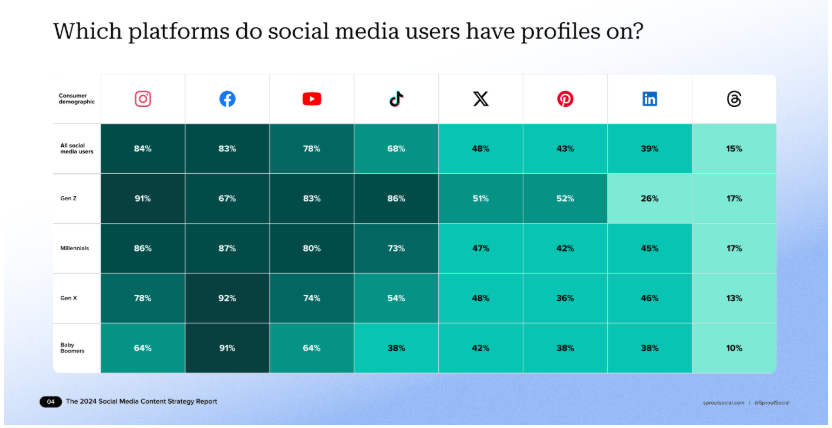
Instagram is your holiday marketing priority
Instagram should be a priority platform for your holiday marketing efforts, particularly if you’re targeting Gen Z. Around 89% of Gen Z social media users are on Instagram, making it the platform of choice for the majority of people within this age bracket.
But you shouldn’t neglect Instagram if you’re engaging in multi-generational marketing; it’s still a significant platform for Millennials (used by 74%) and Gen X (used by 78%).
To tap the power of Instagram, share static images and Reels of your products on the app to promote your holiday offers. Elevate your best deals, promos and events by featuring them in your bio links and shoppable posts. Provide shopping inspiration for your followers by creating holiday gift guides. Take it a step further by reposting user-generated content (UGC) and influencer content of people using (and loving) your products. You can also tap into UGC to find relatable holiday-themed content that will delight your community.
Don’t forget to shine the spotlight on the nonprofit organizations your brand is partnering with this holiday season. Share photos/videos of your team volunteering and infographics about the organization’s impact.
Make Facebook your holiday customer care headquarters
Facebook is the most popular choice of platform for Gen X and Millennials at the moment, with a massive 95% of Gen X using Facebook as well as 85% of Millennial social users. It’s an essential network for brands marketing to these generations, but shouldn’t be neglected entirely if you’re targeting younger audiences.
This is because Facebook is also vital as a purchasing channel. The Index found that Facebook is the network consumers are most likely to turn to when they want to make a purchase, ahead of TikTok and Instagram.
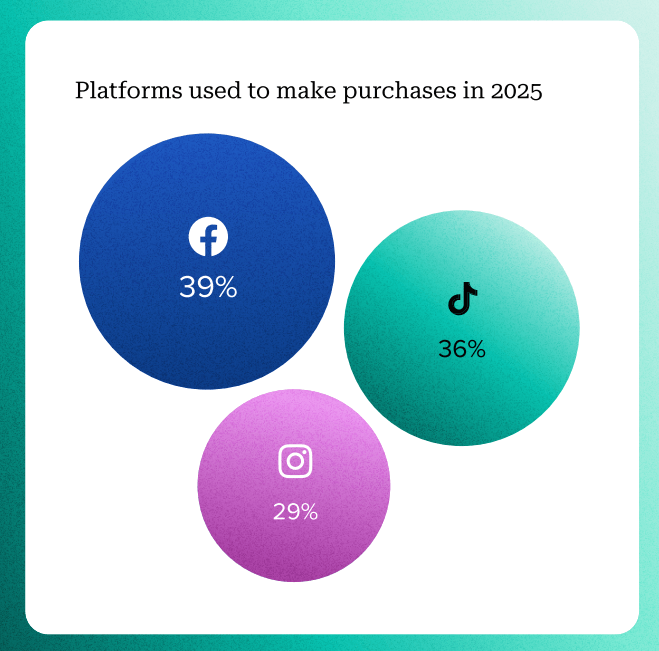
Facebook isn’t just a leading platform for purchasing; it’s also where a lot of users turn to when they want to access customer care. About 71% of Millennials use Facebook when they need support, which is more than Instagram and more than twice the number of Millennials who said they use X.
If you’re using Facebook for customer care, integrate AI tools into your tech stack to increase your workflow efficiency and your ability to scale. This will enable a stronger customer experience and ease internal collaboration.
While consumers turn to Facebook for customer support needs, they stay on the app for attention-grabbing content (think new holiday products, deals and promos). You can even kick-start holiday shopping conversations on Messenger with ads that click to message. Maximize the performance of your organic and paid content by experimenting with video and ephemeral content, and use your analytics to identify your best-performing content early in the holiday season so you can replicate your success into the new year.
Maximize holiday trends on TikTok
TikTok remains the most important network for targeting Gen Z on social media. Some 82% of them are on the network, but what’s most interesting is that 77% of Gen Z users prefer using TikTok when discovering new products, which is even more than Instagram.
Gen Z now uses TikTok as their preferred search engine. To reach them this year, consider how your holiday marketing can meet their search intent. Educate them about problems your products can help them solve (example: how to decorate for Hanukkah like a pro). The holiday season is a great time to partner with TikTok creators who are already creating this content.
Even if your audience doesn’t include Gen Z, you can still use the app for your holiday marketing efforts. Reach a wide audience by tapping into trending sounds and going all-in on holiday aesthetics (you can also re-share this content as Reels on Instagram).
To maximize your profit on TikTok, add products from your website to your TikTok Shop. By creating a TikTok Shop, you can showcase products through in-feed videos, lives and product showcase tabs.
Influence holiday purchases with YouTube
YouTube can help you reach audiences of all ages with your holiday campaigns, but particularly Gen X, who rank YouTube as their second most popular platform. There are a variety of tactics you can implement on YouTube, from full-length videos on your brand’s channel to ads that appear on other popular content.
YouTube is also a good platform to include in your influencer approach. YouTube’s full-screen layout allows for more in-depth content, and the right influencers can create professionally shot, quality videos that feature your product in some way, like reviews, recipes, how-to’s and travel vlogs.
Holiday marketing strategies on Pinterest
According to The 2025 Sprout Social Index, 42% of consumers currently have a profile on Pinterest. Pinterest can be a true wonderland of ideas during the holidays, featuring highly scrollable content for users to save in curated boards.
During the holiday season, Pinners will be on the lookout for on-trend recipes, holiday outfit ideas, décor inspiration and more. Use your brand’s products to create visually appealing photos and short videos with these topics in mind. Include instructions on how to make it or wear it at home (including links to your website). You can position your posts as gift suggestions for your target audience, too (example: what to buy your best friend for Christmas).
Take it to the next level with shoppable Product Pins. These posts make it easy to go from searching for inspiration to buying something—all within the app.
Target B2B shoppers on LinkedIn
LinkedIn might not be the first network you think for holiday sales, but there’s plenty of opportunity to explore. Its audience has twice the buying power of the average web user, which makes it the most important platform for anyone working in B2B sales.
Many companies send gifts to customers and partners around the holidays, often featuring fun or gourmet items. Gift cards also make great gifts for a wide variety of people, including coworkers, bosses and business associates. Advertise and post about your brand’s gift card options to help those unsure what to get for a work colleague.
If your brand offers a B2B service that might be impacted by the holidays, these months are the time for your marketing to shine. You can use LinkedIn holiday marketing strategies to stay connected with your customers, and to promote some of the more inclusive, community-focused parts of your brand. Here’s an example from SAP, which shared photographs from their staff Christmas parties during the holidays.
4 examples to fuel your holiday marketing
Make the most of holiday marketing on social with content that resonates with your audience and conveys the essence of your brand.
Use these social media holiday marketing campaigns as sources of inspiration.
Evoke nostalgia and holiday joy
Holiday gift-giving is a deeply personal and nostalgic pastime for millions of people. Brands that have stood the test of time have the perfect opportunity to connect with customers by evoking this nostalgia and designing campaigns that capture the holiday spirit.
In 2024, Barbie created an Instagram reel promoting a diverse cast of their dolls, along with a caption that leans on the tradition of buying Barbie dolls as Christmas presents.
Take inspiration from Barbie’s content by asking what holiday memories your products can unlock for your customers. Think about what your brand represents—for Barbie, female empowerment and fashion have become a strong part of their identity. Consider what your company makes customers feel, and think about how to communicate that with some festive flair.
Make your customer care stand out
Holiday customer care can come in different shapes and sizes. The personalized book company Wonderbly relies on customization for its products, and they use socials and emails to keep customers informed across the holidays. Here’s an example of their email, where they reassure followers that they’re still delivering gifts in time for Christmas.
They also use social to communicate inclusive holiday personalization options. Here’s an example of an Instagram post promoting their skin tone choices for Santa. Think about how you can use your own social content to care for customers, and how you can use emails and messages to reassure them during the busy season.
Find playful ways to tap into trends
Find a festive trend that you can adapt to your social content strategy. Supermarket chain Aldi jumped on the festive recipe trend last year to promote a brussel sprout salad to their UK audience.
Aldi’s approach combines a free recipe with a product promotion. It’s a great way of getting followers interested, while also reminding them of what the supermarket can offer during the holidays. Aldi also makes their content accessible by including an image description. The more accessible your holiday content is, the wider it can reach online.
Center influencer activations
Influencer campaigns can spice up your holiday marketing and put your content in front of more users through collaborations. One B2B example from last year is Adobe, which partnered with six different creators for their My Festive Story campaign.
Creators were able to interpret Adobe’s brief in unique ways, through videos, illustrations and graphic designs. All artists used Adobe’s suite of software, so the campaign could simultaneously promote solutions while creators told their individual stories. Adobe was then able to repurpose the campaign across social, their website and offer free downloadable Christmas cards. It’s one example of how creative approaches can result in successful omnichannel influencer campaigns during the holidays.
Have a merry, bright and successful holiday marketing season
More people are turning to e-commerce and social shopping, and the most wonderful time of the year keeps getting longer. That means more pressure on social teams to design attention-grabbing campaigns and answer an influx of customer care inquiries.
Improving your holiday sales over time means learning how to measure your success. Download The 2025 Impact of Social Media Marketing report to access tips on how you can (and should) be measuring campaign success to achieve superior results in the future.

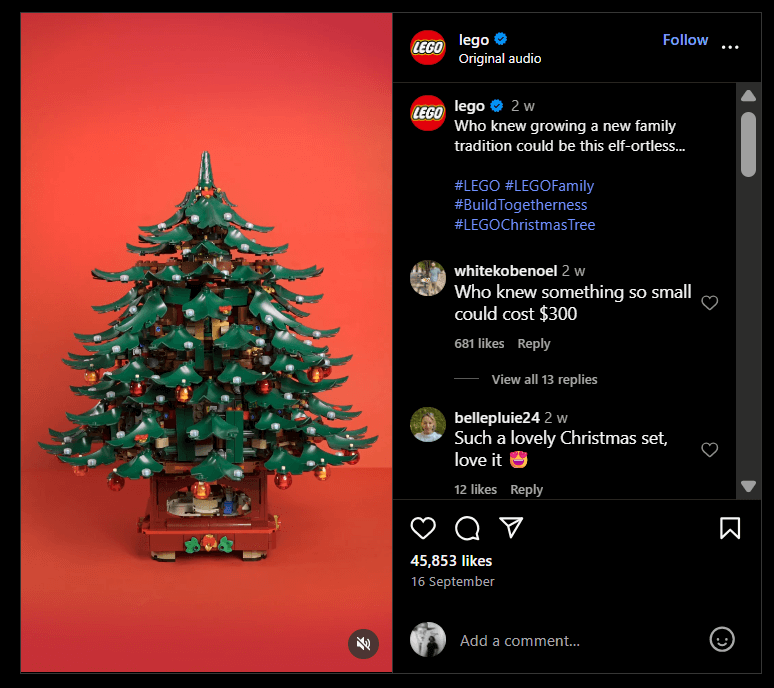
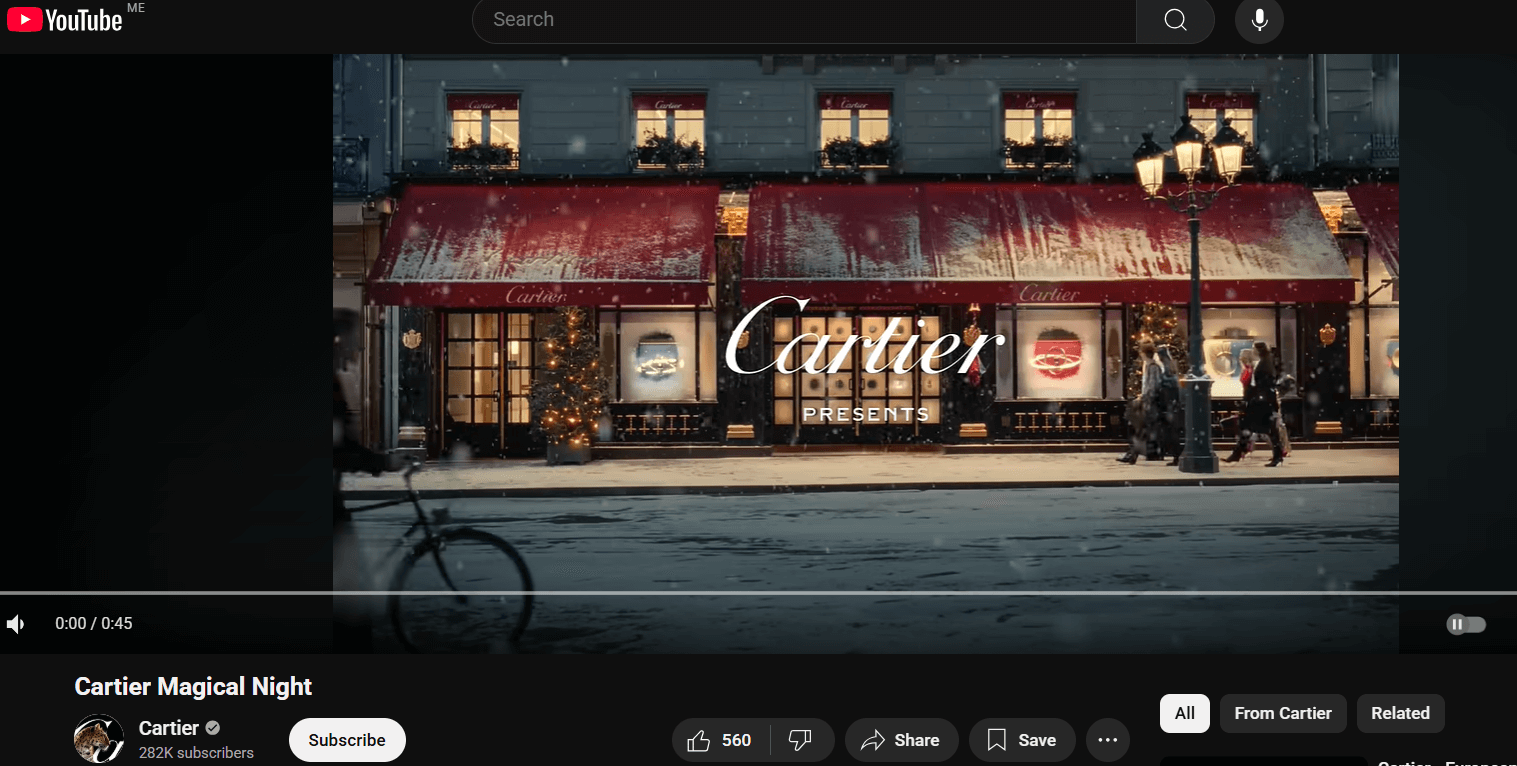
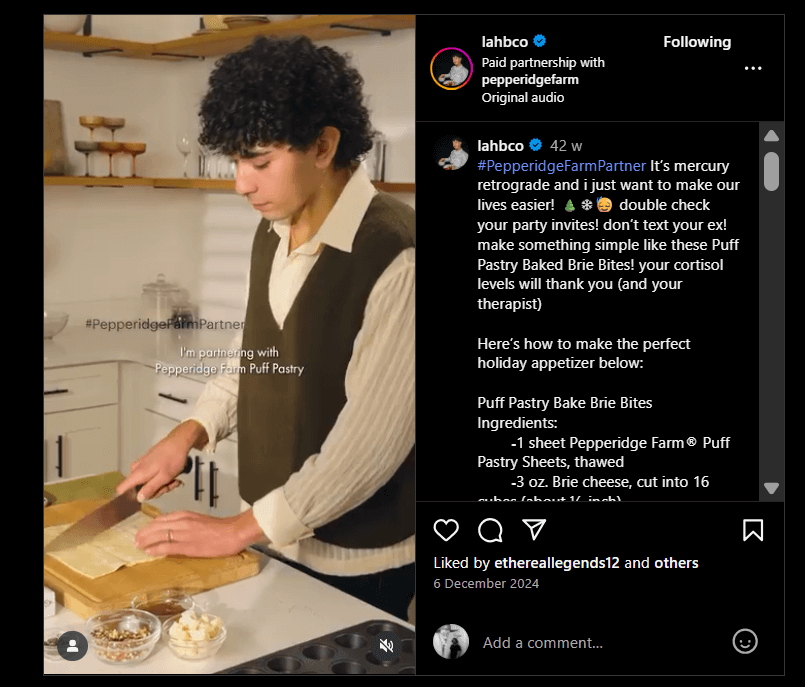
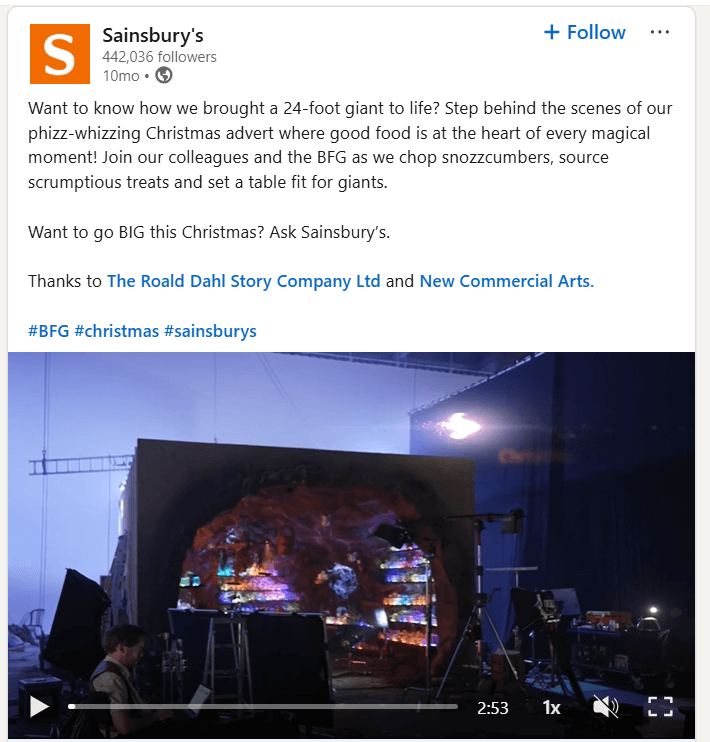
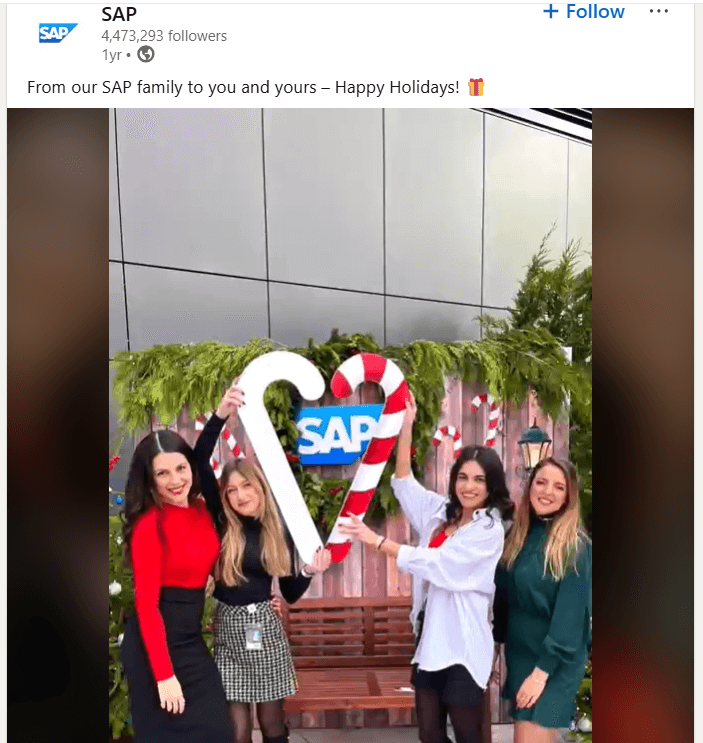
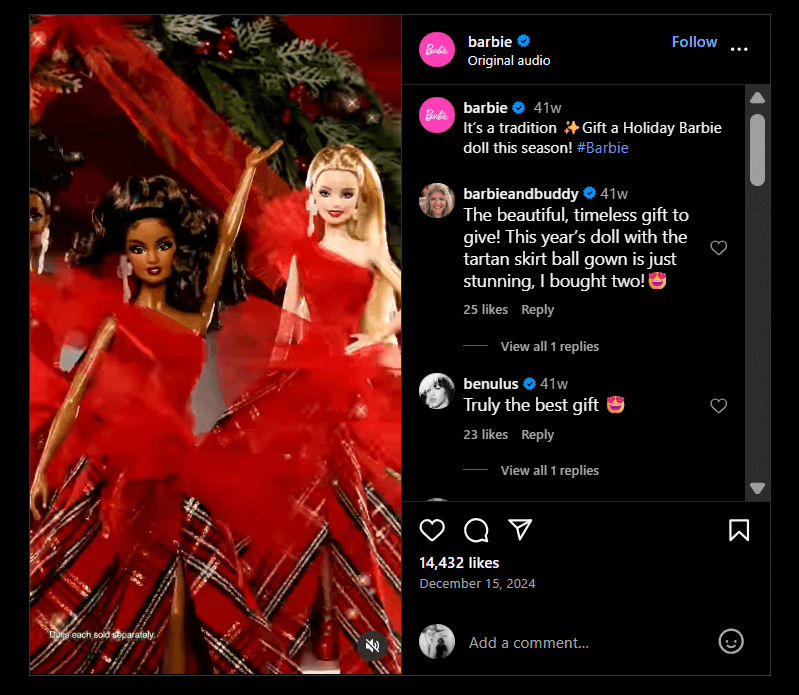
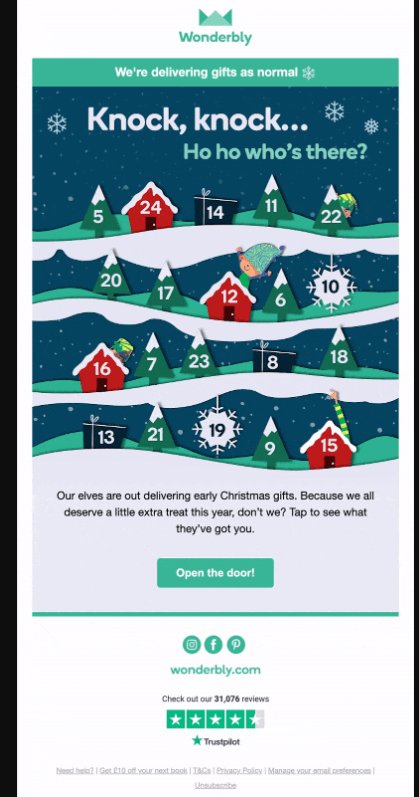
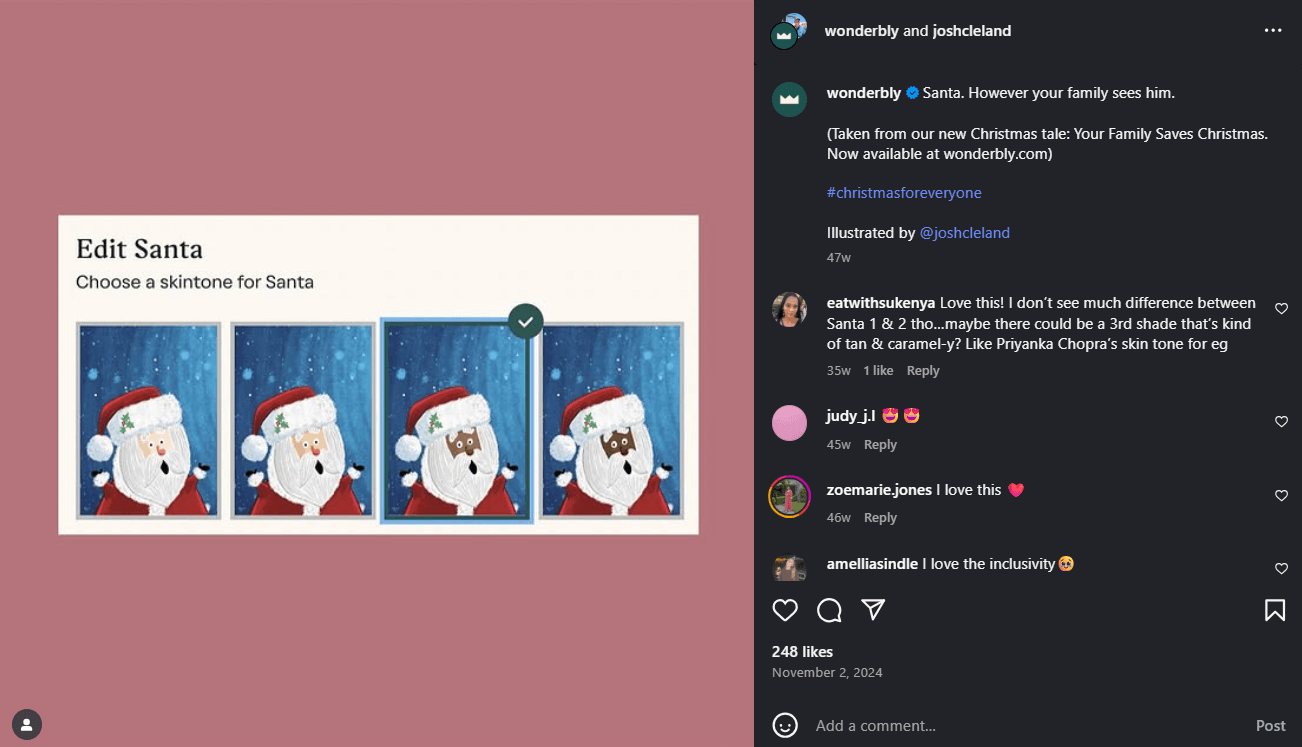
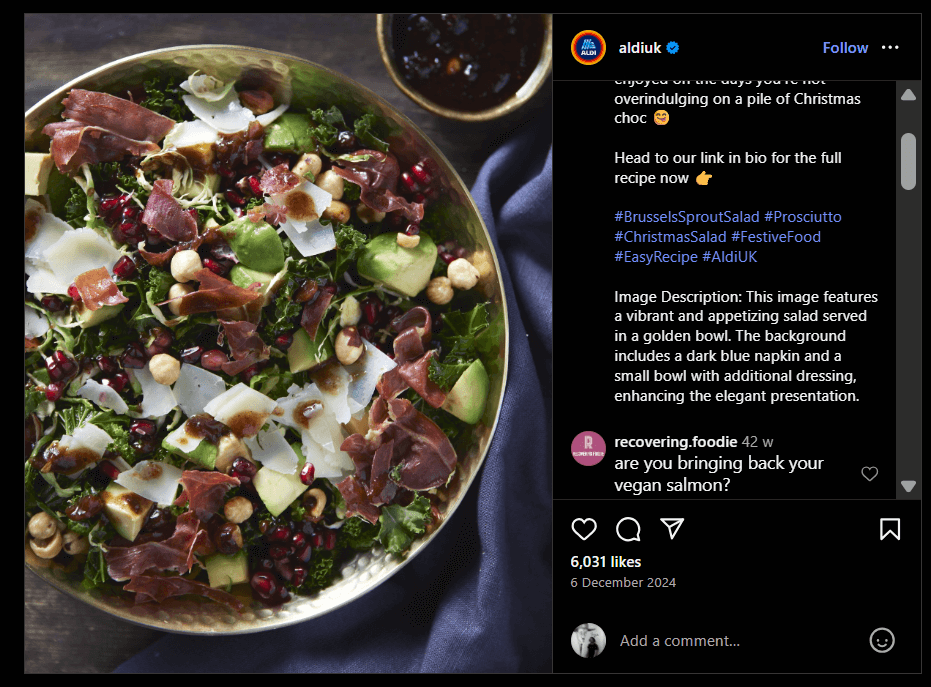

Share